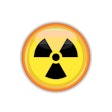
The Quality Payment Program (QPP) continues to be modified due to the COVID-19 public health emergency. The U.S. Centers for Medicare and Medicaid Services (CMS) recently announced some leeway for clinicians affected by the pandemic in 2020 and 2021.
 Erin Stephens.
Erin Stephens.The modifications include the following for performance year 2020:
Individual Clinicians: The Merit-based Incentive and Payment System (MIPS) policy on automatic extreme and uncontrollable circumstances is being extended to all eligible clinicians (EC) reporting as individuals for the 2020 performance year. Thus, EC's will only be scored on performance categories for which data was submitted.
All other performance categories will be reweighted to zero in determining the final score. Individual ECs who do not submit any MIPS data by March 31, 2021, or who only submit data for one performance category, will automatically receive a neutral payment adjustment in 2022. Individual ECs who submit data for two or three performance categories will receive a final score based upon those categories and will earn a positive, negative, or neutral adjustment.
Groups and other entities: CMS has reopened the opportunity for clinicians, groups, virtual groups, and alternative payment model (APM) entities to submit an application requesting MIPS performance category reweighting due to extreme and uncontrollable circumstances for the 2020 performance year. The deadline is March 31, 2021. If data have already been submitted for 2020, an application may not be submitted to override that data; CMS indicates that data already submitted will be scored.
Complex patient bonus: We previously reported that the Medicare Physician Fee Schedule (MPFS) Final Rule for 2021 doubled the complex patient bonus for the 2020 performance year. This means that ECs, groups, and APMs will be able to earn up to 10 bonus points to account for the complexity of treating their patient population due to COVID-19.
Performance Year 2021
The same extreme and uncontrollable circumstances policy for clinicians, groups, and virtual groups will continue through 2021, with applications expected to become available in Spring 2021.
Our annual MPFS update article summarized other changes for the QPP in 2021, including the removal of Quality Measures 146 and 437. The measures that are worth 10 points (225, 364, and 405) are important for radiology groups to report.
The following Quality Measures denominator codes were modified for 2021:
| Measure | Description | Deleted Codes | Added Codes |
| 145 | Exposure dose indices or exposure time and number of images reported for procedures using fluoroscopy | 74250 | 34703, 34704, 34705, 34706, 74221, 77001, 77002, 77003 |
| 360 | Optimizing patient exposure to ionizing radiation: Count of potential high-dose radiation imaging CT and cardiac nuclear medicine studies | None | 78429, 78430, 78431, 78433 |
| 405 | Appropriate follow-up imaging for incidental abdominal lesions | 76700, 76705, 76770, 76775 | * |
| 406 | Appropriate follow-up imaging for incidental thyroid nodules in patients | None | 71271 |
| 436 | Radiation consideration for adult CT: Utilization of dose-lowering techniques | None | 71271 |
Looking Ahead
- The MPFS extended the availability of the web interface reporting option for 2021, but it will finally be eliminated in 2022.
- Value Pathways, a possible option for radiology practices that are running out of meaningful quality performance measures, will become effective for MIPS participants in 2022; they are already available to APMs as of 2021.
- The MIPS reporting threshold is currently projected to increase to 74.01 points in 2022, up from 60 points in 2021. This is subject to review by CMS following review of the 2021 performance data.
- Existing law mandates that the Cost and Quality performance categories become equally weighted at 30% each by the 2022 performance year.
- The Exceptional Performance Bonus is due to expire after the 2022 performance year.
Conclusion
Practices that want to opt out of the QPP for the 2020 Performance Year should act quickly to file their application for extreme and uncontrollable circumstances by March 31, 2021. For the current performance year, the elimination of quality measures 146 and 437 means that other measures will have to be used instead.
No new measures have been added to the pool of those available, but changes were made to some existing measures. These should be evaluated to be sure your practice is reporting accurately.
Erin Stephens is senior client manager, education at Healthcare Administrative Partners.
The comments and observations expressed are those of the author and do not necessarily reflect the opinions of AuntMinnie.com.



















